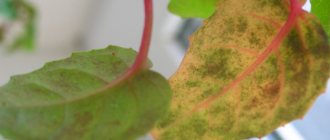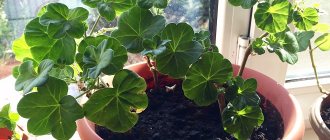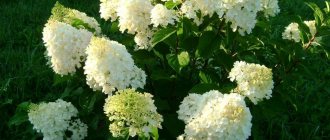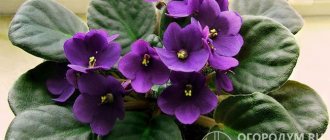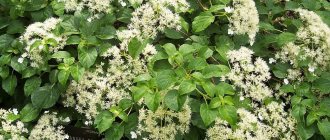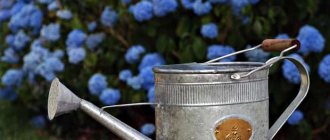An extremely unpretentious and beautifully flowering plant - indoor geranium - can be seen in almost any home. Our grandmothers grew it, especially valuing it for its repellent properties that repel mosquitoes and flies. The plant can produce buds almost all year round if you know how to properly feed geraniums for abundant flowering at home or in open flower beds.
Particularly popular are large-flowered varieties with combined petal colors.
Important substances
The most important for pelargonium are potassium, nitrogen and phosphorus. Each of them plays its role:
- Potassium . Important for normal bud formation and flowering, it is included in all fertilizers for abundant flowering, including geraniums.
- Nitrogen . A necessary element for cell division. Responsible for the growth of all types of flower tissue.
- Phosphorus . Stimulates the growth of a powerful root system and makes the flower resistant to short daylight hours and low temperatures in winter.
It is necessary to make sure that in the formula of the complex for pelargonium the amount of potassium and phosphorus is not less than the amount of nitrogen. The minimum acceptable formula K:N:P looks like this: 1:1:1. The ideal combination is 1.5:2:1. The first option is best used in the spring and before bud formation, and as soon as the first buds appear, it is recommended to switch to the second type.
In addition to these macroelements, development depends on microelements, which also come in the form of a solution from the soil. These are manganese, zinc, iron, copper, boron and calcium. It would be good if they were also listed as part of the complexes.
Common mistakes
There are several mistakes that beginners in floriculture most often make when caring for a geranium bush:
- Pruning in winter leads to weakening of the plant, development of weak shoots and lack of flowering in the future.
- Cutting the stem too high above the leaf node causes the top to dry out.
- Drastic pruning, when the procedure is carried out too short and an excessive number of shoots are removed. This leads to a long recovery of the flower, as a result of which the rate of shoot growth slows down, and flowering does not occur for a long time.
- Cutting branches very often also prevents the plant from recovering and slows down the development of new buds.
- Failure to disinfect the tools used to prune geraniums can lead to infection by harmful fungi and bacteria.
Forms of drugs
Experts recommend paying attention to the release form. There are drugs on sale in the following form:
- Granules provide an excellent prolonging effect. Gradually dissolving in the soil, they provide a constant supply of small concentrations, which eliminates volley burns of the roots.
- Sticks - the same action as granules. The effect of growing on natural nutrient soil is created.
- Liquid concentrates are more convenient for dosing, especially when diluted in small volumes.
- Crystals are easily dissolved in water, so they are also quickly absorbed drugs.
Before applying fertilizers, you should familiarize yourself with the recommended doses and methods of use.
For young plants
Before you figure out what kind of fertilizer geranium loves, you need to understand that the composition of the complexes should change depending on what stage of development the plant is at. So, during active growth and during the period of appearance of buds, emphasis should be placed on different microelements.
Very young specimens are sprouts obtained from seeds or recently rooted cuttings. In the first weeks they do not need fertilizer, but from 3-4 weeks you can begin to gradually feed them. Nitrogen becomes the most important element during the period of active growth of vegetative mass. It is this substance that acts as a building material for each cell, so its reserves in the soil may be insufficient.
At this stage, it is necessary to use universal complexes for decorative deciduous crops. But the concentration should be adjusted: first it is made 2-3 times weaker than that indicated in the instructions for the drug. This approach is necessary so as not to burn the young root system with a strong saline solution.
The intervals between applications should be at least 7-10 days. Feeding more often is prohibited. From the age of two months the plants can switch to the usual concentration.
When growing seedlings after picking, it is good to use organic or mixed complexes. Experts recommend paying attention to “Planta” - active vermicompost and “Kemira”. After such treatments, the root system will be branched, and the ground part will form a beautiful crown.
Organic fertilizers
Of the organic fertilizers, geranium quickly responds with abundant ovary to cow manure, but an already rotten substrate should be used. Fresh mullein can burn the root system, and the concentration of hostile microorganisms that can cause all kinds of diseases of flora is quite high. Therefore, if necessary, fresh cow manure should be diluted with water in a ratio of 1:20 and only then watered, after deep loosening the soil. Experienced gardeners recommend using organics every three years.
How to understand the need
An excess of nutrients is just as harmful to geraniums as a deficiency, so you should not use fertilizing when they are not necessary. After purchasing a flower, it is necessary to replant it in a fresh substrate, since most often it is brought to stores in a transport mixture. It is very light, which is convenient for loading and shipping products, but it contains no nutrients at all. When replanting, it is best to use a ready-made composition for geranium or pelargonium, which contains all the vitamins and minerals in a balanced composition.
Such a reserve is depleted in about six months, and from this moment on, signs of nutritional deficiency can be detected:
- the appearance of diseases such as late blight or rust;
- less intense leaf color than before;
- growth slowdown;
- absence of buds for a long time in an adult specimen;
- falling of flowers;
- lethargy of leaf blades and stems;
- frequent illnesses due to weakened defenses.
If several of these signs are noticed, this is a clear signal that the plant is not getting enough nutrition.
How to prune geraniums to make them fluffy, step by step photos
You need to prune geraniums to form a bush according to the following scheme:
- Examine the plant in order to understand which branches stand out from the general mass, are too long, crooked or thin, and what shape you would like to give the flower.
- Prepare cutting tools. They should be sharp; you can use a knife with a thin blade or a scalpel. It is not advisable to trim with scissors, as they squeeze too much when cutting and damage the tissue of the stems. Treat instruments with alcohol or other antiseptic to prevent pathogenic microflora from being introduced into the sections.
- If there is withered and dry foliage, trim that too. Trim all uneven and damaged branches. Weak side branches need to be pruned, since a bush that is too thick is also bad. Leave only strong, healthy shoots.
- If there are small short shoots on the sides at the base of the remaining shoots, then they should be trimmed. Trim long main shoots to 1/3 of their length, and trim secondary shoots at the level of the 4th or 5th leaf node.
- Sprinkle all cutting areas with charcoal powder. If you don’t have it, you can replace it with crushed activated carbon tablets. 3-4 days after pruning, it is advisable to feed the geranium with fertilizer containing nitrogen. This feeding will help the geranium recover and increase its green mass.
ATTENTION! To form a fluffy bush, one-time pruning is not enough. You need to take care often and, most importantly, regularly. During the entire growth period, it is necessary to monitor the growing branches and periodically pinch them at the level of the 4th bud.
Folk remedies
Don’t think that the best fertilizer for geraniums is a store-bought complex. Folk remedies can give no less effect than products developed and produced in production.
The most commonly used are:
- Iodine . Dilute 1 drop per liter of water. If the dosage is increased, there is a risk of causing a root burn. With a severe burn, even the death of the flower may occur. When watering, try not to get it on the stems.
- Hydrogen peroxide . Dilute 50 ml per 2 liters. Water with this solution once a month.
- Boric acid . Dilute 10 g per bucket of water. Acts as a growth stimulator. It speeds up metabolic processes and increases chlorophyll levels. For greater efficiency, add 1 cup of wood ash to the solution.
- Manure _ Take mullein older than 3 years, since fresh will lead to nitrogen burns. Pelargoniums are most often used for outdoor plantings, since manure, like bird droppings, retains an unpleasant odor in the house.
- Sugar . Dilute the solution until the same level of sweetness appears as when making tea. This fertilizer can be used even in winter.
- Wood ash . It not only saturates the soil with useful substances, but also disinfects it. Therefore, it is especially important to use it in rooms with high humidity or in the fall before wintering in conditions of low temperatures. Ash is diluted in a proportion of 40 g per liter of water.
Banana peels are often used, which must first be dried and ground to powder in a coffee grinder or blender. This powder is poured onto the surface of the earth, after which it is loosened. Gradually, with watering, banana particles will fall deep into the soil. Thus, the substrate will be enriched with potassium and humic acids. Recommendations for digging in fresh peels are controversial: in this way, you can cause rotting of the roots from decomposing organic matter.
How can you feed geraniums?
Stable flowering of indoor and outdoor plants is achieved by those who use the preparations correctly and accurately observe the proportions. The choice of a specific fertilizer for geranium depends on the growing conditions - outside in the summer or indoors all year round. For example, not everyone is ready to use organic fertilizers (manure or bird droppings) in apartment conditions, while this option is quite suitable for fertilizing flower beds or soil in flowerpots standing on the terrace.
Seasonality
Throughout the year, this crop does not need feeding equally. If in spring nitrogen is primarily needed, then in spring and summer each element is necessary for harmonious development. At home, fertilizer for geraniums is not used in late autumn and winter. At this time, the length of daylight hours shortens, which slows down all life processes. If you continue to stimulate pelargonium to grow and bloom, you will get the opposite effect: instead of a powerful green mass, thin shoots with elongated internodes will grow. This is very bad for the plant, it loses its strength, and you won’t see any flowering from it next season. For this reason, from mid-September to March, complex fertilizers are not actively applied.
Spring
After formative and sanitary pruning, rapid restoration of shoots is necessary, so nitrogen-containing compounds are used. They are used 2 times a month with an interval of 2 weeks:
- March: 10 g of ammophoska or azofoska per liter of water;
- April: similar composition;
- May: 5 g of potassium superphosphate per liter of water.
Summer
After the growth of young branches, the laying of buds begins. At this moment it is very important to support the geranium so that the flowering is abundant. At this stage, feeding is allowed not once every 2 weeks, but once every 10 days. The following compositions can be used:
- June: 5 g of potassium superphosphate per liter of water;
- July: solution of 5 g of potassium phosphate and 5 g of azophosphate per liter of water;
- August: a solution of 1 drops of iodine and 20 ml of hydrogen peroxide for planting flowers for next year.
Autumn
The only month when fertilizing is still allowed is September. The concentration of all complexes is already being reduced. The introduced substances are aimed at preparing the geranium for a successful wintering. To prepare the root system, add 3 g of superphosphate dissolved in a liter of water.
From October to the end of February there is a rest period when the flower is not watered so intensively and fertilizers are not applied at all.
Other uses of yeast
Fungal solutions can be used to protect indoor geraniums from late blight. To do this, dissolve 10 g of raw yeast in 1 liter of water and leave for 2 hours. Then the concentrate is diluted in half with warm water and sprayed on the plants. The first time the treatment is carried out after planting young geraniums in a permanent pot. Then apply several more sprays every 2 weeks until buds begin to form.
You can use a yeast solution to soak the seeds. This treatment before planting stimulates germination. To prepare a solution, stir 20 g of raw yeast in 500 ml of warm water and leave for 2 hours. Then gauze or other suitable natural fabric is soaked in the solution. The seed material is wrapped in it and placed in a plastic bag. Several holes are made in it and left in a warm room. After a few days, the seeds will swell. Then they can be sown.
Application methods
Whatever fertilizer you choose for flowering geraniums, it can be applied in three different ways:
- According to the sheet . At the same time, you need to make sure that the leaves do not get exposed to the sun's rays, which can cause burns. It is necessary to use a spray bottle with a fine mist. You need to spray so that the water does not collect in drops and flow down. With this method, nutritional deficiencies can be quickly eliminated.
- Regular watering . This technique is the most common and in demand. It is carried out according to the same rules as regular watering of geraniums.
- Immersion in water . In this case, there is no need to keep the pot in the solution for a long time, 5 minutes is enough. For the oiliest soils that are poorly saturated with moisture, the time can be increased to 10 minutes.
The first method is more considered emergency, while the latter are suitable for systematic use.
Myths and their harm
Today, every second portal literally promotes the benefits of iodine, hydrogen peroxide and even boiling water to improve the flowering of geraniums. We agree, there is an effect, but at what cost?!
Concentrated iodine or peroxide literally scalds tender roots
Plants, feeling a threat, try to “get away” from it in the only way available to them - to throw the seeds away from unfavorable conditions. Hence the rapid flowering that would-be botanists rejoice so much.
If you want pelargonium to bloom profusely not from “pain”, but naturally, it is better to place the plants in small pots. Having mastered the entire volume of soil, the geranium begins to “consciously” plan its settlement, throwing out flowers.
Important Tips
In addition to what fertilizers to feed geraniums, it is also important how to do it. There are a number of rules, violation of which can cause problems:
- Lighting . In summer, when a flower is exposed to direct sunlight for more than 4-5 hours a day, the plant experiences severe stress, so before you start fertilizing, you need to provide shading or move the pot to another place. You can start adding the nutrient solution no earlier than a day after this.
- Solution temperature . Whether when watering or spraying, you must use warm water. Cold will lead to the development of fungi or cause stress to the plant.
- Pre-humidification . The soil should be moistened within a day or two so that the suction hairs of the root system are not burned by the strong mineral solution.
- Loosening . After feeding, the top layer must be loosened so that a crust does not form. This will saturate the soil with oxygen, which promotes the absorption of nutrients.
- Diagnostics . When signs of wilting appear, do not immediately grab mineral complexes. First of all, it is necessary to check the geranium for the presence of parasites or fungal diseases, since most often the reason for the deterioration of the flower’s condition lies in them.
- Pre-landing preparation . Before transplanting or transshipment, fertilizer application is stopped 2-3 weeks. This reduces stress after moving the flower to a new container and soil.
By adhering to these rules, you will be able to grow healthy and abundantly flowering pelargonium, which will delight you with its bright inflorescences every season.


